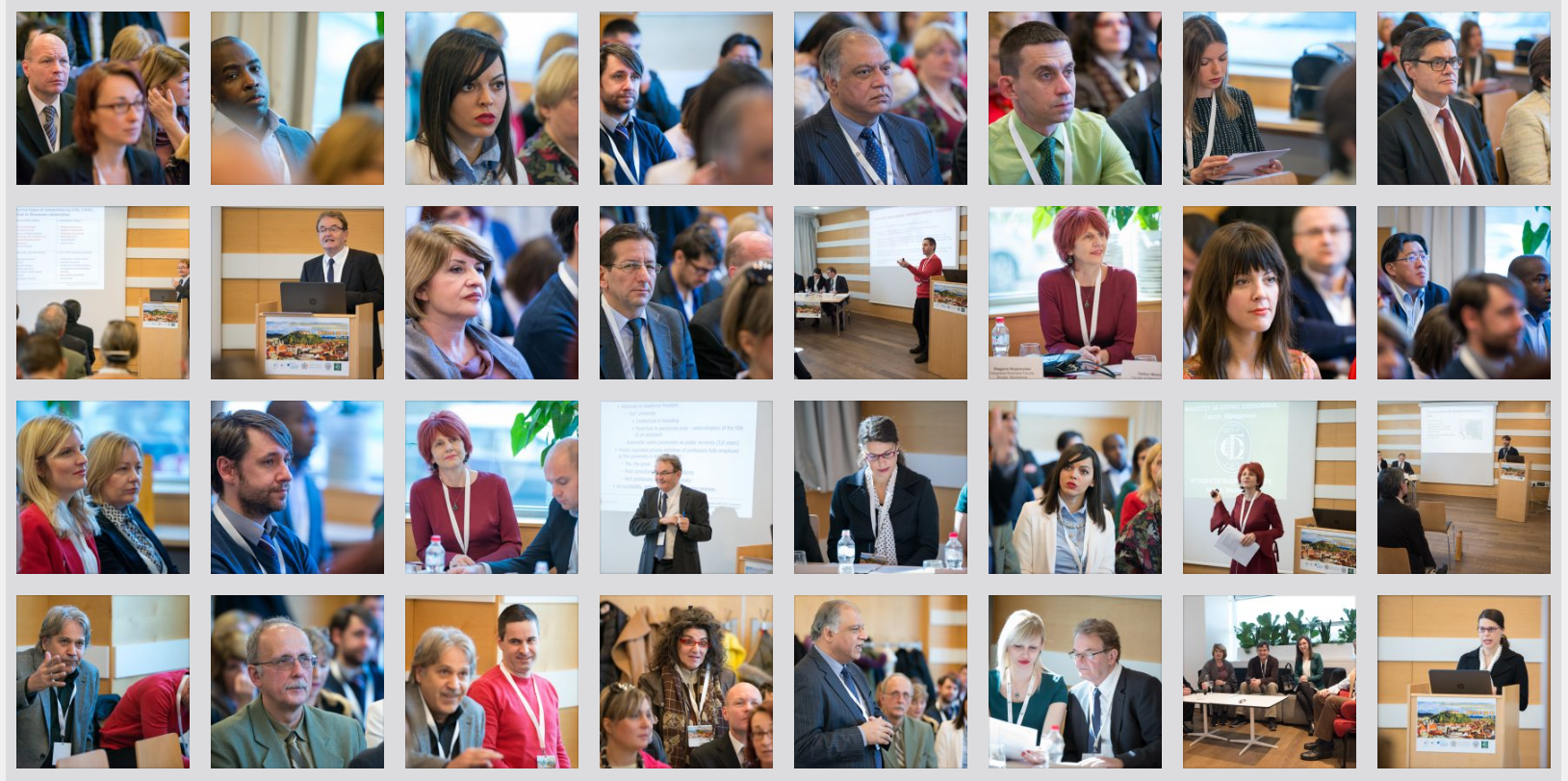Barbara Galbusera – ASST Lecco, Via Eremo 9/11, Lecco, Italy
Keywords:
Schizophrenia;
Education;
COVID-19;
Inclusion;
Well-being
Abstract: The outcome of this pedagogical interview conducted in a Day Care Service found that the pandemic from COVID-19 favored in a group of schizophrenia people social isolation, a flattening of interests, and an increase in additional anxiolytic drug therapy. Thanks to an educational activity carried out with a group of patients who showed before the pandemic period a common interest in watching films, an educational path has been structured that, after six months, allowed them to decrease the need for anxiolytic therapy, resume old hobbies, going out of home and rekindle relationships in the context of belonging. The positive results of this experience underline how, in the treatment paths, it is important to encourage educational interventions to allow patients with schizophrenia to improve their self-being in the world (also reducing the need for support from national health service professionals to access the living environment) and to become an active member of the community.

Download full paper

7th International Scientific Conference – EMAN 2023 – Economics and Management: How to Cope With Disrupted Times, Ljubljana, Slovenia, March 23, 2023, CONFERENCE PROCEEDINGS, published by: Association of Economists and Managers of the Balkans, Belgrade, Serbia; ISBN 978-86-80194-69-1, ISSN 2683-4510, DOI: https://doi.org/10.31410/EMAN.2023
Creative Commons Non Commercial CC BY-NC: This article is distributed under the terms of the Creative Commons Attribution-Non-Commercial 4.0 License (https://creativecommons.org/licenses/by-nc/4.0/) which permits non-commercial use, reproduction and distribution of the work without further permission.
Aristotle. (1341). Politica, Q7, b 32-1342 a 16.
Bartali, S., Nibbio, G., & Vita, A. (2021). Schizophrenia during the COVID-19 pandemic. Current Opinion in Psychiatry, 34, 203-210.
Basaglia, F. (Ed.). (1968). L’istituzione negata, Torino, Einaudi.
Basaglia, F. (2014). L’utopia della realtà, Milano, Fabbri Publishing.
Calò, G. (1953). Cinema ed educazione intellettuale. In Atti del convegno internazionale sulla stampa periodica cinematografica e radio per ragazzi (pp. 156-165). Milano: Giuffré Milano.
Fett, A. K. J., Viechtbauer, W., Dominguez, M. G., Penn, D. L., Os, J. V., & Krabbendam, L. (2011). The relationship between neurocognition and social cognition with functional outcomes in schizophrenia: a meta-analysis. Neuroscience and Biobehavioral Reviews, 35, 573-588.
Flores d’Arcais, G. (1953). Il cinema. Il film nella esperienza giovanile. Padova: Liviana.
Franza, A., & Mottana, P. (1997). Dissolvenze, Le immagini della formazione. Bologna: Clueb.
Galbusera, B. (2018). TOURISM AND SCHIZOPHRENIA: AN ITALIAN CASE STUDY. 3rd International Thematic Monograph – Thematic Proceedings: Modern Management Tools and Economy of Tourism Sector in Present Era, 441-448. https://doi.org/10.31410/ tmt.2018.441
Galbusera, B. (2022). Person with Schizophrenia and Negative Symptoms in COVID-19 Era: A New Evolution for Treatments and Economy. International Scientific Conference ERAZ – Knowledge Based Sustainable Development. https://doi.org/10.31410/eraz.2022.325
Gelkopf, M., Gonen, B., Kurs, R., Melamed, Y., & Bleich, A. (2006). The Effect of Humorous Movie on Inpatients With Chronic Schizophrenia. The Journal of Nervous and Mental Disease, 194(11), 880-883.
Gurcan, M. B., Yildiz, M., Patir, K., & Demir, Y. (2021). The Effects of Narrative and Movie Therapy on the Theory of Mind and Social Functioning of Patients with Schizophrenia. Archives of Neuropsychiatry, 58, 108-114. https://doi.org/10.29399/npa.27291
Laporta, R. (1953). Esempio di lezione sul film spettacolare. In Luigi Valpollicelli (Ed.), Il film e i problemi dell’educazione (pp. 121-131). Roma-Milano: Bocca.
Liu, N. H., Daumit, G. L., Dua, T., Aquila, R., Charlson, F., Cuijpers, P., Druss, B., Dudek, K., Freeman, M., Fujii, C., Gaebel, W., Hegerl, U., Levav, I., Munk Laursen, T., Ma, H., Maj, M., Elena Medina-Mora, M., Nordentoft, M., Prabhakaran, D., … Saxena, S. (2017). Excess mortality in persons with severe mental disorders: a multilevel intervention framework and priorities for clinical practice, policy and research agendas. World Psychiatry, 16(1), 30-40. https://doi.org/10.1002/wps.20384
Malavasi, P., Polenghi, S., & Rivoltella, P. C. (Eds.). (2005). Cinema, pratiche formative, educazione. Milano: Vita e Pensiero.
Marzi, A. (1953). Il cinema nell’educazione popolare. In Atti del convegno nazionale su “I problemi della formazione dei giovani lavoratori” (pp. 17-27). Bari: Ente pugliese di Cultura popolare e di Educazione Professionale.
Merinder, L. B. (2000). Patient education in schizophrenia: a review. Acta Psychiatrica Scandinavica, 102, 98-106.
Mete, L. (2018). Şizofrenide Muayene. In A.E. Danacı, Ö. Böke, M.C. Saka, A. Erol, S.U. Kaymak (Eds.), Şizofreni ve Diğer Psikotik Bozukluklar (pp. 51-80). Ankara: Türk Psikiyatri Derneği Yayınları.
Mottana, P. (2002). L’opera dello sguardo. Bracci di pedagogia immaginale. Bergamo: Moretti e Vitali.
Niemiec, R. M. (2020). Character strengths cinematherapy: Using movies to inspire change, meaning, and cinematic elevation. Journal of Clinical Psychology, 76(8), 1447-1462. https://doi.org/10.1002/jclp.22997
Nussbaum, M. (2007). Le nuove frontiere della giustizia. Bologna: Il Mulino.
Pavone, M. (2016). Cinema, disabilità, Qualità della Vita. L’integrazione scolastica e sociale, 15(4), 361-369.
Rajkumar, R. P. (2020). COVID-19 and mental health: a review of the existing literature. Asian Journal of Psychiatry, 52, 102066.
Rivoltella, P. C. (Ed.). (1998). L’audiovisivo e la formazione. Metodi per l’analisi. Padova: Cedam.
Rodari, G. (2001). Grammatica della fantasia: Introduzione all’arte di inventare storie. Torino: Einaudi.
Sen, A. (1992). Inequality Reexamined. Oxford: Oxford University Press.
Sen, A. (1993). Capability and well-being. In M. Nussbaum and A. Sen (Eds.), The Quality of Life. New York: Oxford University Press.
Tarquet, M., Luciano, S., Geddes, J. R., & Harrison, P. J. (2020). Bidirectional associations between COVID-19 and psychiatric disorder: retrospective cohort studies of 62,354 COVID-19 cases in the USA. Lancet Psychiatry, 8, 130-140.
Tarroni, E. (1950). Filmologia pedagogica. Milano: Viola.
Tu, P.-C., Su, T.-P., Lin, W.-C., Chang, W.-C., Bai, Y.-M., Li, C.-T., & Lin, F.-H. (2019). Reduced synchronized brain activity in schizophrenia during viewing of comedy movies. Nature, 9, 12738. https://doi.org/10.1038/s41598-019-48957-w
Volpicelli, L. (1949). Dibattito sul cinema didattico. Cinema didattico e pedagogia. Bianco e nero, 1949(10-12), 34-39.
Wang, C., Horby, P. W., Hayden, F. G., & Gao, G. F. (2020). A novel coronavirus outbreak of global health concern. The Lancet, 395, 470-473.

